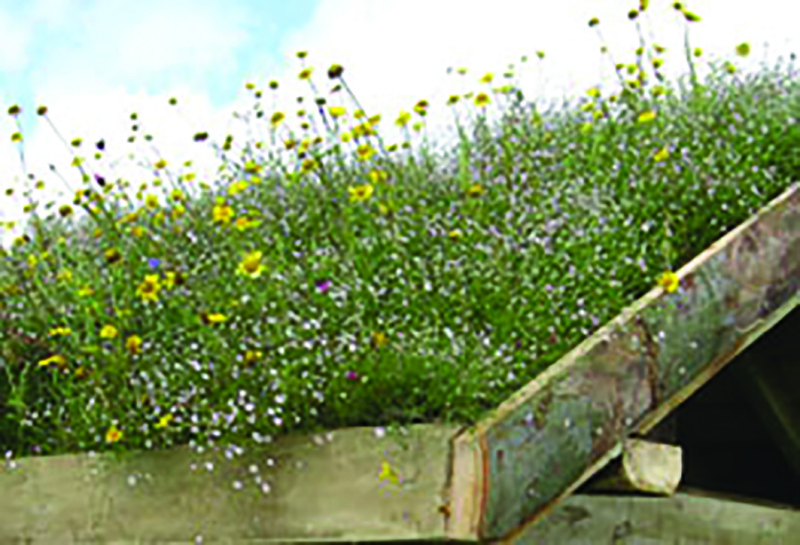If you have a shed or extension you’d like to make an attractive feature of, it’s well worth considering a green roof. Green, also called living roofs, can be retrofitted or installed at the time of building.
While the idea may seem a bit daunting, they’re actually more straightforward than you’d think and have a host of benefits from attracting birds, bees and butterflies to improving air quality and keeping your building warm in winter and cool in summer – not to mention being very pretty to look at. They can also help with your planning application, Southwark Council and the Dulwich Estate are quite sensitive to any effort to improve the local biodiversity.
What plants can I use?
Sedum roofs are particularly popular – I’ve noticed lots popping up locally. Sedum are ideal as they’re tough, drought resistant and don’t need much soil. There are lots of varieties to choose from often turning a rich red in autumn and all flowering at different times, producing a neat carpet of different textures and colours throughout the year.
Wildflowers can also be used. The roof of the Horniman museum’s library building is a large-scale example – spot the mass of dancing white ox eye daisies in spring. The Café on the Rye also displays a mini meadow on its roof every year. The advantage in using perennial wildflowers is you’ll have a more diverse range of plants, that’ll vary from year to year – and in turn attract more wildlife. But they’re heavier than sedum as they require a deeper growing medium and are only in flower for half of the year. Or for the best of both worlds, you could even have a combination of sedum and wildflowers.
What is involved?
It depends on how big the roof is and how handy you are. It is possible to construct a green roof yourself, or speak to your architect, builders or specialist companies. You’ll need to make sure the structure can withhold the weight of sodden compost – not usually a problem with sedum but might mean adding extra support to a shed or with bigger projects, consulting a structural engineer. The basic layers needed include a water and root proof membrane (such as a pond liner), a drainage layer and above that the growing medium that best suits your plants –something mainly inorganic, lightweight and free draining. When it comes to planting, the simplest option is using a sedum mat or wildflower turf that rolls out (sedumgreenroof.com sell both). Otherwise you can plant out plugs individually or even scatter a green roof seed mix. You’ll also need to consider drainage – usually holes cut into the frame to allow water to flow onto the guttering.
What about maintenance?
On the whole they’re pretty low maintenance. A new sedum roof will need watering once a week for the first three months, but after that should take care of itself. Meadow planting will need to be mowed once a year in the autumn and may need watering in long hot spells – especially in the first year. So if you’ve been inspired, now (autumn) is a great time to install one before it gets too chilly– or wait until spring, giving plants time to get established before the summer.
Barbara Samitier is a garden designer who lives in Peckham Rye.
www.barbarasamitiergardens.co.uk
This feature first appeared in the October 2015 issue of SE22 magazine.


